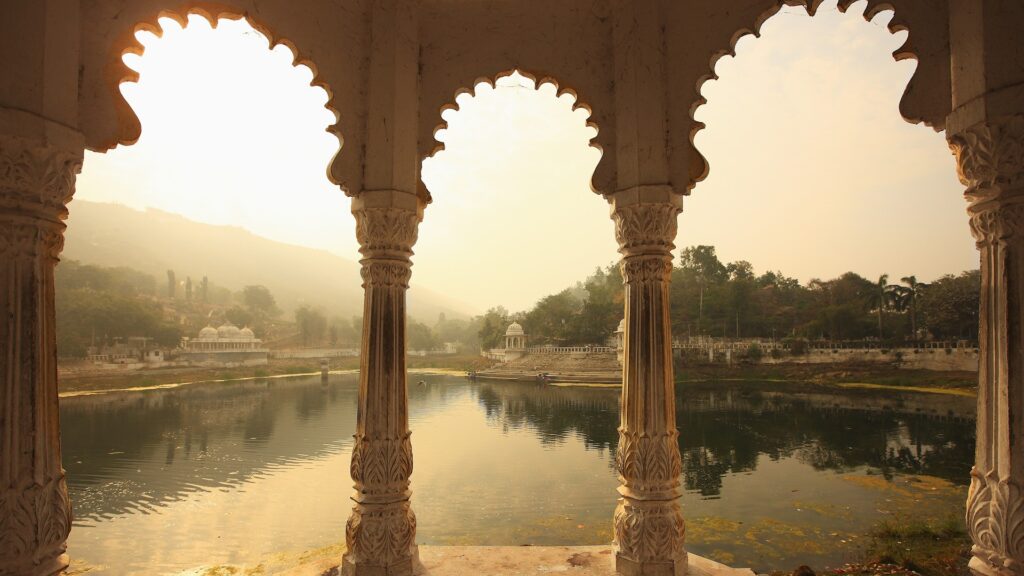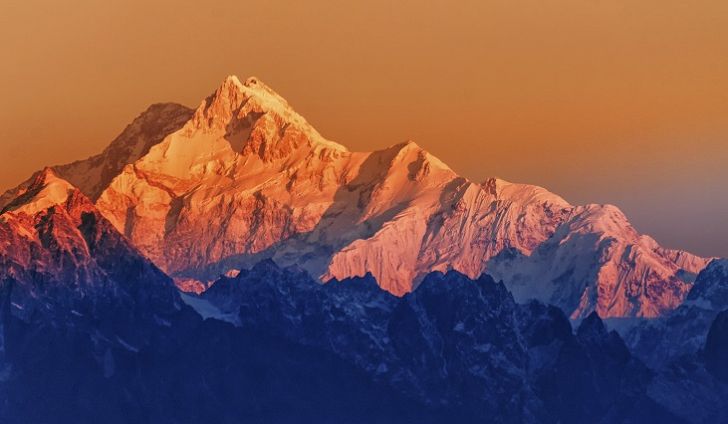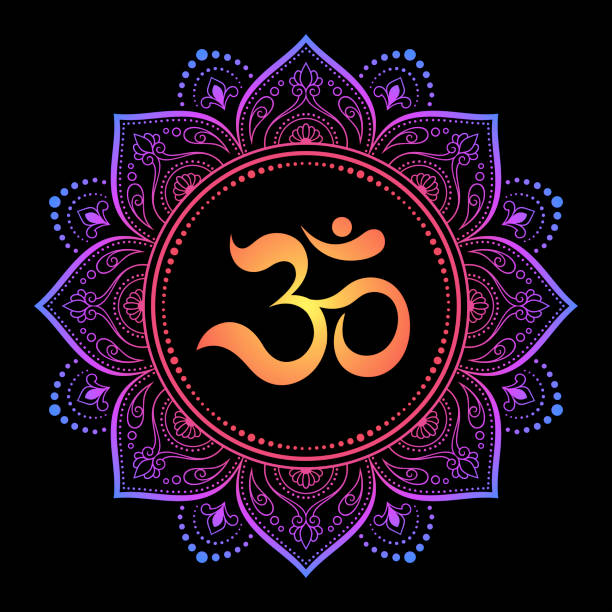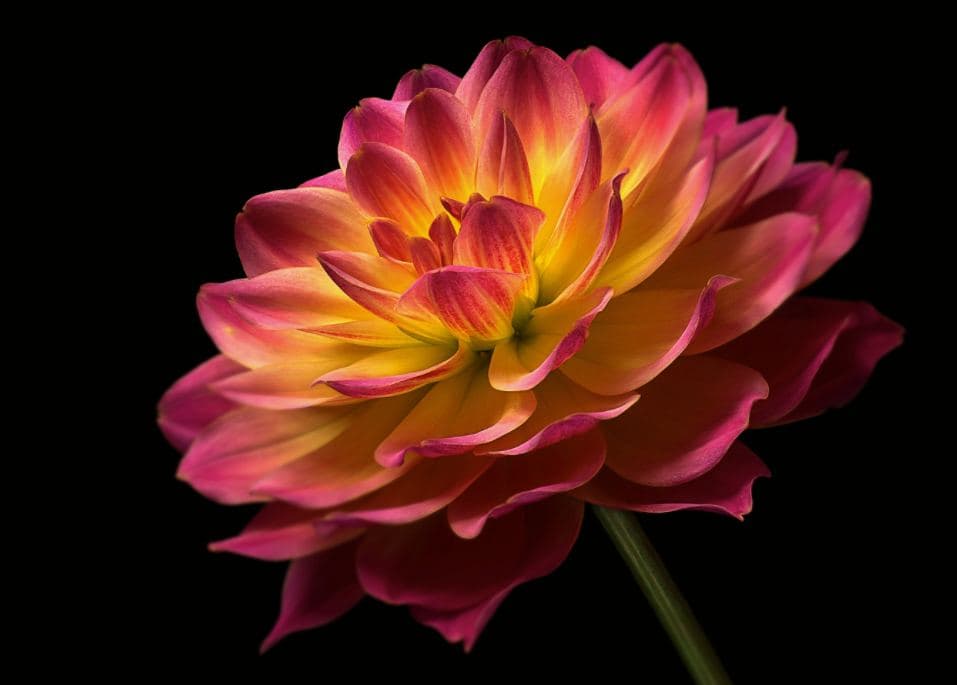“Yoga is the embrace of reality itself”
Mark Whitwell, Patanjali, Patthabi Jois
“Once the fluctuations of the mind are calmed…
The seer rests in their own essential nature,
no longer identified with its fluctuations… that is Yoga”
“Yoga is an internal Practice, everything else is a circus”.
I feel blessed to be able to study and practice Yoga for 3 months, I feel truly grateful to be able to devote myself to this path, it is heart warming, and I am reminded of my teacher quoting Martin Luther King Jr. “Before we leave the house in the morning, we are already indebted to half the world”… I don’t mean that in some abstract sense of “knowing it’s theoretically true and feeling slightly guilty for it” but in the sense of feeling my inter-connectedness with all life, and how beautiful that is, bittersweet at times, blissful at others.
I also feel enthusiastic about the amount of topics we have opened and already covered in a bit of depth. We are a very small class of 5 students, being taught by 4 experienced Teachers, most if not all of whom have been to India and have professional experience in other areas, such as Acting, Sports Medicine, Business and so on. I feel trust and hope. I don’t know where to start with writing this article, so I’m going to write a short version of basically everything I know and have learned. The first thing that happened after we met in the hall, and i played my handpan 
It feels like a big opportunity to change my life, and do professionally what i have been interested in personally for a long time. I am very happy and grateful for this chance. I love Mythology, philosophy and topics that awaken the deeper energies and potentials of humans, as well as MOVEMENT
It turns out, this was what I was hoping to study when I applied to University over ten years ago; I wanted to learn about the beauty of life, and how to get closer to it, I thought that “Fine Art” was my ticket, well, I discovered a different type of Art, and now i’m finally feeling fulfilled (:
I pray I will be a good teacher and put these 500 hours of learning to wise use, integrating them in my own life, and offering them to others to receive as life giving gifts…
…But let me rewind a little before I dive deep into all of that: at a relatively young age I studied Kung-Fu for a few years, as well as Chi Gong and Tai Chi with monks from the Shaolin Temple in China, who came and set up a school near me in Berlin, Germany. I studied it because I wanted to be like Bruce Lee back then and they told me this was a good path to learn to be able to be like him… I was inspired by the films he made, in particular “enter the Dragon” and his philosophical statement(s);
“Be like water, my friend”!

Funnily enough, one of the first poses we learned in our teacher training was called “Dragon”, and it was part of the “Moon Salutation”, Dragon is an advanced forwards lunge in which the lower rear leg is lifted as much as one can bear (without outright pain), in order to stretch and flex open the hips and legs. One of the main things I have learned this week, is to lean into the poses I am doing as much as I can endure, and to really stretch my comfort zone as far as it will go, just approaching the border of “Pain” but not going into or over it, for that would be dangerous.
There is a saying that has accompanied me for many years, since my first Yoga festival in 2013 actually, it is simple: “Life can only give you everything if you do too”. I now see just how true that is, by being given the opportunity to lean into each pose courageously, day by day, and “face the dragon” of considerable levels of discomfort… this has profound psychological effects too, and is a little battle every time.

I feel there is deep truth in the system of Yoga and that it is a great hope for Humanity, and the simple answer as to why it has survived, almost unchanged, for so long, is that it works.
Funnily enough, one of my fellow students worked in the Pharmaceutical industry before switching to this and she said “I don’t want to have anything to do with those Mafia goons anymore”… I believe she made the right choice.
I feel the truth of all this through my own personal practice, and the activation and healing of my organism as a whole. Within this short time, my ability to focus and my ability to not be “triggered” by other people, has gone up quite measurably, I am really surprised. Things that would have annoyed me simply don’t anymore, for I have my inner attention fixed on a higher goal now. The other thing I’m surprised by is how much Spontaenous release of trapped emotion there is, specifically in the form of laughing, crying and generally feeling much more in tune with my own feelings.
In the ancient Tantric paths of Yoga, they say, there is no absolute good or bad as far as emotions go, there is simply flowing and stuck emotion, and that which causes flow or Stuck-ness in yourself or others… So much has released even within this short week, I really am starting to feel like a new person, able to let go of the pain and identification of the past self. It’s like a light went on within me 

Also a joy and surprise; a cross cultural cross pollination has happened and is continuing to happen; one of my teacher’s is teaching Yin Yoga which is a fusion of Taoism (“The way of nature’s virtue”) and HaTha Yoga, because her Teacher “Sarah Powers” passed it onto her in that form; as a fusion of Taoist Medicine, Buddhist Meditation and Indian Yoga, and revealed the things these great traditions have in common, and how these systems complement one another, This Yin (Moon) style, as opposed to Yang (Sun), holds poses for long periods of time (3 to 5 to 10 minutes), instead of quickly switching from pose to pose in a choreographed sequence, and allows for meditation during the postures.
…I find it fascinating and a verification of the truth of cross Culturual concepts, that they overlay, like maps, of the human body and energy system, for instance, the Nadi system and Meridian system are almost identical, they are invisible channels of energy that run through the body…
The ancient scriptures and texts are at times beautifully poetic,
as well as scientifically verifiable, both in theory and practice.
The Yogasutra of Patanjali for instance, is an incredibly dense yet short book filled with instructions for how to reach enlightenment, and the “Tao Te Ching”, is also a master piece one could study for decades to grow in love and wisdom through, these wonderful books filled with paradoxical wisdom, about the virtue of emptiness, about thinking in order to stop thought itself, and how space gives so much, even though it (almost) doesn’t exist, in the same sense as the other elements do, are pillars of nations. They are like the eastern versions of “the bible”, although it is my belief, based on evidence, that Jesus may well have visited India, during the 18 undocumented years between 12 and 30… but that’s beside the point of this article, and worthy of one in and of itself. Suffice to say, that a giant in the literature of Yoga, Paramahansa Yogananda, wrote “The Yoga of Jesus: the second coming of christ in you”, and offered his perspective in a 1700 page work.

Although in our course, there has been almost no mention of the origins of Yoga according to myths and legends, in the forms of Krishna and Shiva teaching roughly 5000 years ago, beyond a brief mention of the source book the “Bhagavad Gita” (of which Gandhi said “It always lifts me up, no matter how low I feel”) and not much probably can be said by anyone about Lao Tzu, the Author of the Tao book either, except that he was wise… although that is the case, I am happy with the method my teachers use, it seems accurate, systematic and professional, and perhaps one doesn’t need to comment on mythical origins, perhaps that is wiser than opening things for debate, which might be termed question of belief or religion. Perhaps we live in such an information and science driven, legalistic age, that one constantly has to watch one’s tongue… I don’t know. I do know that I love stories, and stories help me remember things, which is why I was happy to learn today, that most poses have stories attached to them.
I did recently realise in a meditation though, that the figures revered by modern-day hippies like Krishna, Jesus, Shiva, Buddha, Gandhi and so on, do also have warrior and war-like qualities, especially when it comes to self discipline, and I’m happy I’m developing that too now. Gentleness is like having 1 oar in a rowing boat, but you also need Power, and then the two balance each other out and you can go forwards. These figures did their best to live in peace, but were not cowards by any stretch of the imagination, and did not shy away from conflict. Personally I’m not much a of a physical warrior, yet, beyond some enthusiasm for martial-ARTS films, but I do respect that aspect of life, and have toughened up the last few years with ice bathing and cold showers, as taught by another Yogi, “Wim Hof”. I can truly recommend embracing Both the peaceful and the warrior side of life, for I feel incomplete without both, and many poses are named “warrior”, “dancer” and so on.

Actually, here’s my attempt to invent one, to help you remember a few basic Yoga poses:
If I was infinite love, I would become A mountain,
A mountain for trees to grow on, trees for flowers to blossom on,
flowers for bees to buzz in and make honey with, for everyone to enjoy and be nourished by.
If I was infinite love, I would be a cat, and be everyone’s good, yet independent friend.
If I was infinite love, I’d be a dog, always full of gusto, positivity and loyalty.
If I was infinite love, I’d change myself into a thousand different forms, to make life full, rich, and beautiful.
Mountain Pose, Tree Pose, Flower Hand Pose, Brahmi Bee Breathing, Cat Pose, Dog Pose, Compassion meditation… it’s wonderful how stories can help us remember things, and that’s what i’m finding to be a great tool; using associations to make sense of the overwhelming amount of new information.
In addition to that am writing this article/ journal from memory and creativity, and seeking to pass on what I have learned, from what my body and mind have absorbed so that I learn it more deeply, for as Yogi Bhajan put it “if you really want to learn something, teach it”!
As opposed to looking up sources and copying & pasting anything.
But please beware, you are responsible for yourself, only practice what feels good.
Before we get into more depth there’s also an obligatory misnomer to clear up, what is often called Yoga today is mostly just one part of an eight part system, which I explain further below, close to the end of the article, The posture part of yoga is simply a preparation for meditation and transcending the pain and confusion of parts of one’s history (the results of past actions; karma), and ascend to greater levels of Life, Now! These poses are called Asanas and there are many of them, but they are not the point in themselves, they are simply meant to prepare one to be able to sit for many hours, in a concentrated way, to reach greater heights and depths within oneself.

With that out of the way, let’s continue, I’m so happy! 
What we are learning is close to the original Hatha style of Yoga, that has been passed down for Millennia, Hatha, which itself is a composite word, Made up of the words for Sun (HA) and Moon, indicates a lot about Yoga; through harnessing opposing qualities, one can attain balance and health. In fact, Yoga translates into “Harness” as in “Yoke” also.
There are predominantly activating styles of Yoga-Asana practice which are quite challenging and great for ones muscles, flexibility, cardio-vascular system, Prana (life force energy/ Chi), sense of timing, awareness of one’s body, tolerance for discomfort and last but not least: FOCUS!
The Sun styles are for instance: Ashtanga Yoga, Kundalini Yoga, Power Yoga, Acro-Yoga,
and any style that is focused on Activation.
There are also predominantly calming styles of Yoga, such as: Yoga Nidra, Yin-Yoga, PranaYama, Restorative Yoga and so on, these styles have a Calming effect, and focus on regulation & regeneration.
Each school and style has its terminology for energetic phenomenon, a lot of them overlap, in the ancient white Tantra path which i studied a little already, these two energies are also called Shiva and Shakti, and are depicted beautifully here in the work of the artist “Geoglyphiks”. The Asana known as “Eagle” is said to bring these two opposite energies closer together. It is quite a challenging pose, but I believe it does what it’s intended to

Many “Styles” and “Schools” are quite modern and in my opinion “reinventions of the wheel” made popular by and for marketing purposes, but the living core of yoga is ancient and luckily mostly unblemished. Some modern additions are useful, but some are downright dangerous, such as cults and false gurus (plenty of documentaries about those unfortunately, one is even a comical social experiment named “Kumare”… in my opinion the only guru is the one deep inside).
Beyond what is more popularly thought of as “Yoga”, there are a few more styles, which skip the “Asana” (Posture) part of the Path, and place their focus more on the spiritual side of things, through either Singing, Philosophical Debate, or Loving Kindness and Devotion at the centre of their Practice. These are called Mantra Yoga (Singing), Jnana Yoga (Wisdom / The Search for the Truth of Being) and Bhakti Yoga (Living with one’s whole heart and giving it to the Source; “God”/ “Ishvara”/ The Universe)
In truth, one cannot forever separate these different elements of Yoga, anymore than one can separate organs of the body from oneself.
Here are more things we learned:
PranaYama, 
“Nadhi Shodhana”
(Alternate nostril breathing, which activates the two brain halves) and
Ujjayi Breathing (“Champion’s breath“) in which the vocal chords are constricted,
to boost focus and the absorption of life force energy.

This painting of Krishna can also be interpreted as an allegory of internal energy; The Hero lifts up the snake (life energy) riding his bird (garuda; awareness) and the two consorts accompany him (the left and right halves of his being/ brain halves… for instance)
We learned about Three different types of Meditation 


Shamatha (Concentration)
Vipassana
Maitri (Compassion) Meditation,
as well as a 4th little bonus meditation, that we have been asked to do daily, if we cannot make time for anything else; The “Landing” meditation, which is a form of checking in with oneself. “How Am I”?
“How is my Heart”? (the emotional body is meant)
“How is my Body”? (observing physical sensations & one’s overall state)
“How is my mind/ spirit”? (am i distracted? Am I focused? ).
This week we practiced the Concentration type meditations in the form of observing our breathing, which is a commonly known form of meditating, except that we restricted our focus to just one part of our breathing system, and kept returning to that point. It is surprising how long 15 minutes can be, if one really observes and pays attention to detail, and what can happen in that time, it’s almost as if time stretches out and kind of loops around, Leonardo da Vinci actually said “Time makes space for those who make use of it”.
The Compassion & Heart centred Meditations, had as their focus emotions and words, in the forms of these well known Buddhist prayers: “May all beings be happy, may all beings be free from suffering, may all beings stop causing suffering”. Buddha taught these three types of meditation, we haven’t covered Vipassana much yet. I had a misconception about Sidhartha Gautama (Buddha) until I read the novel by Herman Hesse about him and that piqued my interest to learn more in general… for some reason I thought he was a far east Asian figure, when he was actually an Indian prince, and the term he’s known by is itself a stage of awakening beyond the mind, literally being above it. It’s interesting just how similar Hinduism and Buddhism actually are, the main difference being the more scientific and structured approach of Buddhism as opposed to embodied and devoted in the Yogic/ Hundi tradition.

Anyway, as you can see, or read, I tend to focus more on the intellectual side of Yoga (Jnana), sometimes even getting lost in it, but luckily, 60% of our course is based on physical exercise and understanding it so on-wards with that! (:
Fascia & muscles 
We covered the way these function and the way they cover parts of the body,
We covered the 6 different types of movement, briefly, although we need to go into more depth for a more solid understanding, and we learned that “Fascia are like the River-Bed, and Nadis/ Meridians are like the Rivers (of energy)”
Similarities between Nadi’s and Meridians,
As mentioned above, the ancient Chinese and Indian cultures had similar concepts, whereas the Indians focused on spirituality and the 7 main energy centres which can easily be seen as energetic counterparts to the physical endocrine glands (adrenal, pineal, thymus, thyroid and so on), the chinese focused more on general health & well being and the healthy operation of the energy channel “meridian” system.

The 206 bones of the human body & their types
We started learning what all the bones are and how there’s 4 main types and a freaky 5th.
Sinews; Ligaments & Tendons 

Ethnic skeletal differences, 
there is an absolute limit people can stretch to, it is simply when their bones collide, some bone structures are different and block certain poses, our teacher explained there are “Viking” skeleton based bodies, and “Temple Dancer” types, both body types are good, simply different, and we were shown evidence in the form of bones and live demonstrations of students who could and could not achieve certain mile-stones in yoga Asanas.
Mantras in regard to meditation, 
(A.U.M. // Awake, Relaxed, & Such simple words which can have profound effects)
We learned the effect of Mantras and how they can keep bringing the mind back to the centre, creating space and putting an end to the “monkey mind”, the continual talking & narrative of mind. Yantras are essentially visual mantras, as you can see here, in this visual depiction of the AUM sound.

The last few things I’ll briefly cover by name:
The 8 fold path and its contents 
(Yamas, Niyamas, Asana, Pranayama, Dharana, Dhyana, Prattyahara, Samadhi)
Yamas; How to interact with the world
Niyamas; How to interact with oneself
Asanas; Yoga Postures
Pranayamas; Breathing Methods
Dharana; Concentration
Dhyana; Meditation
Prattyahara; withdrawing the senses
Samadhi; AWAKENING / The beginning of enlightenment.
The Yamas subdivide into 5 points which are:
Ahimsa (nonviolence)
Satya (Truthfulness / Not lying)
Asteya (not stealing)
Brahmacharya (awareness and control of one’s sexuality)
Aparigraha (Non-greed / Sharing / not hoarding things)
The NiYamas also divide into 5 points:
Saucham (Cleanliness on all levels of Self)
Samtosha (Contentment; Satisfaction; abiding in joy regardless of one’s situation)
Tapas (Purifying Enthusiasm)
Swadhaya (Earnest Study of one’s Self)
Ishvarapranidhana (Devotion, embodying faith)
The role of Focus & the effect it has on energy 
What we focus on expands… an incredibly deep realisation.

I also foraged a little further in my yoga anatomy book and discovered this gem about Brain anatomy; 
The 7 chakras/ energy centres 
With all that said and done, here is a 30 minute guided “Moon” style yoga class, for free, which guides you into a deep state, close to sleep, perhaps you, like my, feel you now earned it 

There are two more highlights I want to share from my first week: 1, that in the deepest part of my meditation this week, a Buddha type face appeared to me and communicated something like: Stay in the depths to return to your true Nature.
And also, we were asked by the sporty Yoga teacher Helena to devote our lesson to a being of our choice, i chose Yeshua, and felt quite touched, in particular, a few days later something went click for me: there is a pose called eye of the needle, and he once said “it’s harder for a rich man to enter heaven than for a camel to enter through the eye of a needle”… there is also a pose called Camel… as I said, it went click for me 









Thank you so much dear Sam for writing this resumé of your thoughts and of what you learnt in your first week of yoga teacher training.
Fascinating and inspiring
Thank you so much for going to the trouble of writing all this.
Very much appreciated
September 10th 2023